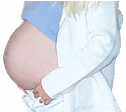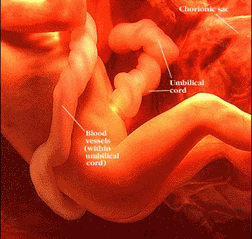
Pregnancy is broken down into weeks, and is divided into three equal parts called trimesters. Full term pregnancy is considered 40 weeks and an infant delivered before the 37th week completed is considered premature. Premature infants may have problems with their growth and development, as well as difficulties in breathing and digesting. Pregnancy is counted from the first day of a your last period. This means that at conception, the unborn baby is already considered two weeks old. Also see BabiesDirect month to month diary to learn about the emotional and physical journey of pregnancy.
week completed is considered premature. Premature infants may have problems with their growth and development, as well as difficulties in breathing and digesting. Pregnancy is counted from the first day of a your last period. This means that at conception, the unborn baby is already considered two weeks old. Also see BabiesDirect month to month diary to learn about the emotional and physical journey of pregnancy.
Fetal Development
28 weeks – The fetus has his own regular intervals for sleeping and being awake. It also opens and closes its eyes and may suck a thumb.

29-30 weeks – For several months, the umbilical cord has been the baby’s lifeline to the mother. Nourishment is transferred from the mom’s blood, through the placenta, and into the umbilical cord to the fetus. The fetus now weighs about 3 pounds. The baby’s head is growing longer. Also brain growth is very rapid during this time.
31 weeks – Now it is time for the baby’s lungs and digestive tract to be very near of being mature. Baby’s weight gain will exceed its growth in length from now on.
32 weeks – During this time the baby sleeps 90-95% of the day. The baby will now weigh about 4 pounds. You may have noticed a decrease in your baby’s movements. The reason for this is the uterus getting to be too small for the baby to move. The baby is still trying to move frequently but it just doesn’t have enough room to move. The baby can also now turn its head from side-to-side. The baby’s organs are continuing to mature.
33 weeks – The fetus is now about 18 inches long and weighs 4 1/4 pounds. The baby is using it’s lungs to practice breathing by inhaling amniotic fluid. The baby’s hair is also growing.
34 weeks – The baby now weighs about 5 pounds and is approximately 19 inches long. It has probably already take the head-down position by this time. The skull bones are still pretty flexible and not completely joined to help to ease exit out of the narrow birth canal . The baby’s skin is also becoming less wrinkled and red.
35 weeks – The baby is now about 19.5 inches long and weighs over 5.5 pounds. The baby’s hearing is now mature. The baby’s body is growing round because of developing fat layers.
36-37 weeks – The baby’s weight is now about 6 pounds and and the height is about 20 inches. You may now notice that it sometimes may feel like the baby is gradually dropping. This is called lightening. The feeling comes from increased pressure in the lower abdomen.

38-40 weeks – Your pregnancy is considered full term now (anytime between 38-42 weeks is full-term). Most of the baby’s skin downy coating has now disappeared. The baby weighs now approximately seven and a half pounds. At birth the placenta will detach from the side of the uterus and the umbilical cord will stop working when the child takes his first breaths of air outside of uterus. The child’s breathing will trigger changes in the heart that will force all blood to go through the lungs.